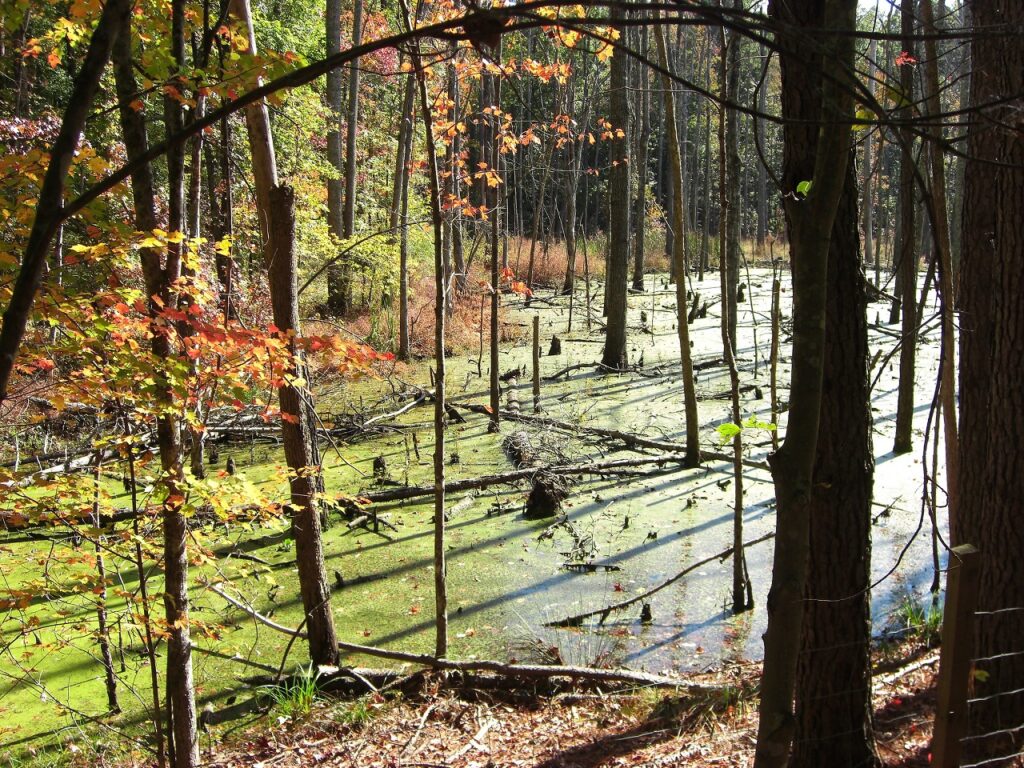By Megan Word, Founder of Explore! Spanish Tutoring

If you’re a biker, runner, or meander-er like I am, the American Tobacco Trail (ATT) will appeal to your love of nature, your thirst for history, and your desire for peaceful, yet invigorating outdoor activities.
Whether you’re craving an adrenaline-fueled cycle, a serene jog, or a leisurely stroll, the ATT invites you to immerse yourself in the heart of North Carolina’s captivating scenery while retracing the steps of our rich cultural heritage.
A Serene Escape
The ATT trail, a tribute to our region’s tobacco heritage, begins in downtown Durham, meandering through lush forests, across scenic wetlands, and along rolling farmland, before culminating in rural Chatham County. This picturesque pathway is a serene escape from the hustle and bustle of urban life, offering a tranquil journey into the heart of North Carolina’s captivating landscapes.
The American Tobacco Trail (ATT) is steeped in history, its roots firmly embedded in North Carolina’s rich agricultural and industrial past. The trail’s existence today is a testament to transformation, a story of how an old railroad corridor, once bustling with commerce, has been repurposed into a tranquil pathway for outdoor enthusiasts.
First a Bit Of History
The story of the ATT begins in the late 19th century when the Durham and South Carolina Railroad was established to transport Brightleaf Tobacco from the fertile fields of North Carolina to the bustling markets of Durham. This railroad was critical to the region’s economy, allowing for the rapid transport of tobacco, which was then a cornerstone of the local and state economies.
In the 20th century, the corridor was taken over by the Norfolk Southern Railway, continuing to act as a vital transport artery for goods and commodities, including coal, lumber, and of course, tobacco.
From Rails to Trails
The railroad’s decline began in the late 20th century as industries shifted and transportation methods evolved. The once-busy railway fell into disuse and was eventually abandoned. However, instead of letting this historic corridor fade into obscurity, a visionary idea emerged to transform the old rail line into a recreational trail.
The rails-to-trails movement was gaining momentum nationwide, repurposing old, unused rail corridors into public trails. Inspired by this concept, local communities, conservation groups, and governmental entities rallied together to give the abandoned railway a new lease on life.

The Birth of a Recreational Pathway
In the late 1980s, the Triangle Rails-to-Trails Conservancy (TRTC) was formed, acquiring the railroad corridor in 1995. The aim: to convert this 22.6-mile long stretch into a multi-use trail – the American Tobacco Trail. The project faced numerous challenges, including property rights issues and funding constraints, but the resolve of the community and the TRTC remained unshaken.
The first section of the trail, located in Durham, was opened to the public in 2000. Over the next decade, additional segments were gradually developed and opened. The final section, which included a pedestrian bridge over I-40, was completed in 2014, marking the successful culmination of a nearly 25-year-long endeavor.
Trail Highlights
The Durham section of the trail is home to the historic Durham Bulls Athletic Park and the Durham Performing Arts Center. As you move south, the trail takes you through the quaint town of Cary, offering a charming mix of modern boutiques and historic architecture, and the sprawling Jordan Lake. The lake is a haven for wildlife, and if you’re lucky, you may catch sight of bald eagles, red foxes, or white-tailed deer.
Recently, the North Carolina Department of Transportation has announced plans to further extend the trail’s southern end, promising to offer even more opportunities for exploration. This exciting development will enable ATT to reach more communities, fostering connections and promoting an active lifestyle.
Activities and Events
Throughout the year, ATT hosts a variety of events, including the annual “Tobacco Road Marathon” and half marathon. These events not only offer a unique fitness challenge but also raise funds for important local causes.
Commitment to Conservation
The ATT is also a testament to the region’s commitment to conservation. The trail’s management has implemented measures to protect and preserve local wildlife habitats, ensuring that the ATT will remain a vibrant ecosystem for generations to come.
Access Points and Parking
The beauty of the American Tobacco Trail lies in its accessibility. The trail can be reached from multiple points, catering to both north and south end explorers:
Durham: For those starting from the northern end in Durham, the trail begins at the Morehead Avenue/Blackwell Street intersection near the Durham Bulls Athletic Park. Parking is available at the Durham County Stadium on Stadium Drive.
South Durham & Research Triangle Park (RTP): South Durham and RTP residents can access the trail at the Fayetteville Road trailhead, where parking is available.
Apex: Located in unincorporated Apex, the trail bisects the New Hope Church Road, where there’s a trailhead with parking. You can also access the trail from the White Oak Church Road access point, though parking is limited.
Chatham County: For those starting from the southern end, you can access the trail via the Pittard Sears Road trailhead in Chatham County, which also offers parking.
Remember to respect the local environment when visiting the trail. The American Tobacco Trail is a treasure of our community, and it’s up to all of us to keep it clean and preserved for future generations. Enjoy your exploration!
Next up: Historic Yates Mill Park in Southwest Raleigh NC
Conclusion
The American Tobacco Trail is more than just a pathway—it’s a lifeline that connects communities, encourages outdoor activities, and preserves our region’s rich history and natural beauty. Whether you’re a novice hiker or an experienced cyclist, the ATT is a must-visit destination in North Carolina, promising an unforgettable journey through our state’s enchanting landscapes and captivating history.
For more updates and information, visit the official American Tobacco Trail website or join one of our Explore! Spanish Learning Programs for a guided tour. Experience the wonders of the ATT firsthand, and be part of our thriving community.
